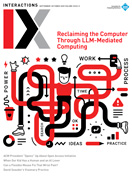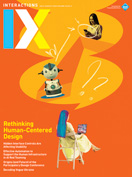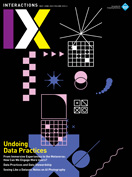Authors:
Jakita O. Thomas
Go back to the past in order to build for the future. — Sankofa My journey toward intersectional computing began in 2015, when I took my daughter, Vivian, to the Grace Hopper Celebration of Women in Computing (GHC) in Houston. Vivian is an artist-scientist (as all three of my children are). She's a beautiful dancer and singer who also loves science and engineering. She's currently 12 years old, but back in 2015 she was 5. And she was sooo excited to not only go on a work trip with mommy but also to see women of all kinds in…
You must be a member of SIGCHI, a subscriber to ACM's Digital Library, or an interactions subscriber to read the full text of this article.
GET ACCESS
Join ACM SIGCHIIn addition to all of the professional benefits of being a SIGCHI member, members get full access to interactions online content and receive the print version of the magazine bimonthly.
Subscribe to the ACM Digital Library
Get access to all interactions content online and the entire archive of ACM publications dating back to 1954. (Please check with your institution to see if it already has a subscription.)
Subscribe to interactions
Get full access to interactions online content and receive the print version of the magazine bimonthly.






